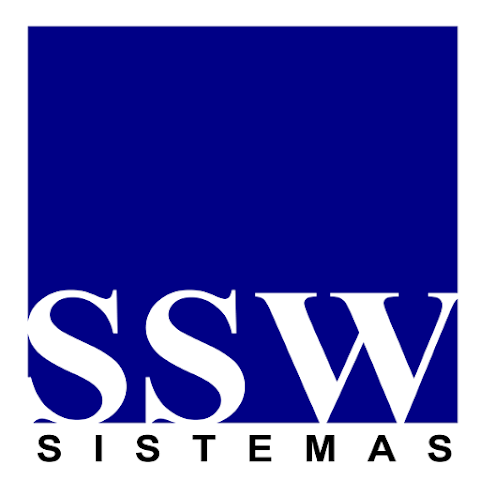When operations depend on spreadsheets, phone calls, and gut feeling, the outcome is predictable: long routes, delays, rework, and logistics costs above plan. The good news is that data, mobility, and automation put logistics literally in the palm of your hand—from manager to driver—and transform performance end to end.
In this article, you’ll find practical strategies to optimize route planning, gain real-time visibility, and reduce costs, plus how a route planning solution can accelerate this journey at scale.
What “logistics in the palm of your hand” means in practice It’s the ability to plan, execute, and measure delivery operations using mobile-first, logistics SaaS solutions, with:
- Route planning and replanning in a few clicks
- Driver app with routes, checklists, and proof of delivery
- Real-time monitoring (GPS/ETA) and proactive communication with the end customer
- KPIs (OTIF, cost per delivery, utilization, km per stop) accessible anytime
When everything happens in a single system, decisions get faster, drivers work with clarity, and customers receive a consistent experience.
Key day-to-day challenges
- Poorly optimized routes that ignore delivery windows, capacity, constraints, and traffic
- Low visibility into delivery and fleet status
- Reattempts and returns due to communication gaps
- Fuel costs and idle time above expectations
- Difficulty balancing loads across vehicles and regions
- Lack of reliable data for analysis and continuous improvement
Strategies to maximize results
- Constraint-driven route optimization Efficient routing goes beyond “shortest distance.” Consider:
- Delivery windows and priorities
- Vehicle capacity (weight/volume)
- Service time per stop
- Access constraints (urban centers, time windows, docks)
- Traffic and real-time events Expected outcome: fewer kilometers driven, better SLA compliance, and smarter fleet utilization.
- Territory design and stop clustering Group orders by zones, micro-areas, or ZIP codes. Benefits:
- Shorter deadhead between stops
- Driver specialization by region
- Easier replanning and resource substitution
- Capacity balancing and mixed fleet Distribute loads evenly across owned and third-party vehicles. Tips:
- Set utilization limits (e.g., 80–90%) to avoid overload
- Use what-if scenarios to decide when to activate partners
- Centralize cost visibility per vehicle and per route
- Proactive communication and customer experience Reduce calls and uncertainty with:
- Automatic ETA and status updates via SMS/WhatsApp/email
- Tracking page with real-time status
- Clear delivery window with approach notifications This lowers reattempt rates and boosts end-customer satisfaction.
- Last mile with digital proof of delivery Standardize delivery confirmation:
- Photo, e-signature, and geolocation
- Failure reason and one-click rescheduling
- Checklists by service type (B2B, B2C, pickup, installation) Beyond reducing disputes, it creates audit trails and inputs for improvement.
- Live monitoring and dynamic replanning Track in real time to:
- React to incidents (traffic, no-shows, new pickups)
- Reoptimize routes mid-day
- Notify customers if ETA changes This protects your SLA and prevents a domino effect of delays.
- Data culture and KPIs Define goals and key metrics:
- OTIF/On-time (on time and in full)
- Cost per delivery and per km
- Km per stop and utilization rate
- First-attempt success rate
- Door-to-door lead time
- Reattempts and returns by reason Review weekly, identify root causes, and adjust policies (windows, cutoffs, zones, partners).
Technology as an accelerator: Route Planning Specialized route optimization and delivery management tools simplify the entire cycle. When evaluating a solution, look for:
- Multi-constraint optimization: windows, capacities, priorities, and service times
- Reliable geocoding and address correction
- API/spreadsheet integrations with e-commerce, ERP, and WMS
- Driver app (Android/iOS or web) with navigation, checklists, and POD
- Real-time monitoring, ETA, and proactive alerts
- Fast replanning during operations
- Dashboards and reports with actionable KPIs
- Access controls, audit trails, and data privacy compliance (LGPD)
How Meu Rastreio can help Meu Rastreio is a logistics SaaS built to give last-mile visibility and efficiency. With the Route Planner module, you can:
- Plan and optimize routes considering operational constraints
- Distribute deliveries by zones and balance loads across vehicles
- Track execution in real time and adjust routes as needed
- Capture digital proof of delivery and failure reasons
- Measure productivity KPIs and cost per delivery Learn more: Meu Rastreio Route Planner https://meurastreio.app/pt-BR/planejamento-de-roteiros
Companies that adopt this routine typically see fewer kilometers driven, better window compliance, fewer reattempts, and higher productivity per vehicle. Results vary by process maturity and operation profile, but predictability and control improve immediately.
Practical example: from chaos to efficiency in 30 days Hypothetical scenario: a regional distributor with 12 owned vehicles and weekly demand peaks. Before
- Manual routing concentrated in one person
- Drivers making detours without manager visibility
- 3–4 reattempts per day due to lack of customer contact
- High fuel and overtime costs After adopting a logistics and routing app
- Routes generated in minutes, honoring windows and capacity
- ETA sent automatically; tracking page available
- Digital proof of delivery with photo/signature
- Mid-day replanning when urgent pickups arise
- KPI dashboard with cost per delivery, km per stop, and OTIF Within weeks, the team standardizes the process, cuts unnecessary travel, and stabilizes the SLA—boosting per-vehicle productivity and reducing admin rework.
Mobile logistics trends to watch
- AI-driven planning: continuous improvement from historical data
- Dynamic ETA with real-time traffic
- Sustainable last mile: stop consolidation and CO2 metrics
- Advanced POD: smart photos and contextual validation
- Security and data privacy (LGPD) as a trust pillar Adopting tools and routines aligned to these trends lowers change costs and accelerates your service-level evolution.
10-step implementation checklist
- Map flows (order → route → delivery → POD → analysis)
- Clean and standardize addresses (ZIP, number, complements)
- Define delivery windows and operating rules
- Register fleet, capacities, and constraints
- Configure service zones/areas
- Integrate orders via API/spreadsheet and test routing scenarios
- Train drivers on the app (checklists and POD)
- Enable customer communications (ETA and tracking)
- Monitor in real time and practice replanning
- Close the loop with KPIs and weekly improvement rituals
Conclusion: efficient logistics fits in your hand Putting logistics in the palm of your hand means faster, data-driven decisions with intelligent routes, end-to-end visibility, and well-informed customers. By combining strategies like territory design, constraint-based optimization, and dynamic replanning with a robust route planning solution, you cut costs, increase productivity, and raise your service level.
Meu Rastreio was designed for this: to give operational control day to day and support growth with easy-to-use technology.
Schedule a free demo of Meu Rastreio’s Route Planner and see how to apply these strategies in your operation: https://meurastreio.app/pt-BR/planejamento-de-roteiros
Or talk to a specialist to get your questions answered and build a tailored rollout plan.











